Generality
A urodynamic test is a diagnostic test that studies and evaluates the functionality of the bladder and urethra during their respective storage (bladder) and release (urethra) tasks.

There are several types of urodynamic examination; the most important types include: uroflowmetry, cystometry, electromyography of the bladder, measurement of post-voiding residue, pressure / flow study, urethral pressure profilometry and video-urodynamic examination.
Brief anatomical recall of the urinary system
The elements that make up the urinary tract are the kidneys and the urinary tract.
The kidneys are the main organs of the excretory system. Two in number, they reside in the abdominal cavity, on the sides of the last thoracic vertebrae and the first lumbar vertebrae; they are symmetrical and have a shape that resembles that of a bean.
The urinary tract, on the other hand, forms the so-called urinary tract and has the following structures:
- The ureters. Two in number, they are the ducts that connect the kidneys to the bladder. For the avoidance of doubt, it should be noted that each ureter is independent of the other.
- The bladder. It is a small hollow muscular organ, which accumulates urine before urination.
- The urethra is the duct that connects the bladder to the outside, allowing urine to escape during the act of urination.

What is the urodynamic exam?
Urodynamic exam is the name doctors assign to each diagnostic test, which allows them to assess how the bladder and urethra are performing their respective tasks of storing (bladder) and releasing (urethra) of urine.
Where does a urodynamic exam take place and who performs a urodynamic exam?
A urodynamic examination can take place in the hospital wards of Urology, Gynecology-Obstetrics, Internal Medicine and Primary Care.
In most cases, the doctor who prescribes and performs urodynamic tests is the urologist.
The urologist is the internal doctor specialized in the diagnosis and treatment of diseases affecting the urinary tract of men and women, and the reproductive organs of the male gender (penis, prostate, testicles and seminal vesicles).
Indications
Typically, doctors order a urodynamic examination to be performed if one of the following symptoms or conditions is present:
- Incontinence;
- Frequent urination;
- An urgent urge to urinate, but not followed by urination;
- Painful urination
- Difficulty initiating urination
- Difficulty completely emptying the bladder
- Recurrent urinary tract infections.
Purpose of the urodynamic examination
The purpose of a urodynamic examination is to provide the doctor with useful information to diagnose the causes and nature of the symptoms and conditions mentioned above, in order to be able to plan, at a later time, the most appropriate therapy.
Features
There are different types of urodynamic examination; the most important types of urodynamic examination include:
- The uroflowmetry;
- Cystometry;
- Electromyography of the bladder;
- The measurement of the post-voiding residue;
- The pressure / flow study;
- The urethral pressure profilometry;
- The video-urodynamic examination.
A physician may decide to have the same patient undergo one or more of the aforementioned urodynamic tests.
The choice of which and how many urodynamic tests to prescribe depends on the symptoms and health conditions that emerged during a previous physical examination. This means, for example, that in such circumstances it may be sufficient to perform uroflowmetry alone, while on other occasions it may be necessary to carry out combined uroflowmetry, cystometry and measurement of the post-voiding residue.
Uroflowmetry
The uroflowmetry is the urodynamic examination that allows to study and evaluate, in an absolutely non-invasive way, the characteristics (speed in primis) of the urinary flow during urination.
Considered the simplest of the urodynamic tests, uroflowmetry involves the use of a device - the so-called uroflussometro - which has the ability to measure the amount of urine emitted in a unit of time, reporting it in real time on a graph.
For patients, uroflowmetry consists only of urinating in a special funnel or in a special toilet, which are connected, in turn, to the uroflowmeter and equipped with a special scale for measuring the flow of urine.
Cystometry
Briefly, cystometry is the urodynamic examination through which doctors measure:
- The total amount of urine that the bladder can hold;
- The intravesical pressure, that is the pressure present inside the bladder;
- The contractile force of the bladder at the time of urination;
- How the bladder accumulates urine;
- The level of filling of the bladder that induces the urge to urinate;
- Intravesical pressure at the time of a sudden loss of urine.
Electromyography of the bladder
Electromyography is a diagnostic test aimed at assessing the health of the muscles and the cells that control the latter: the so-called motor neurons.
Electromyography of the bladder consists in measuring and studying the electrical activity of which the nerves, which control the muscles of the bladder, in particular the sphincters, are the protagonists.
One particularly studied "area of the bladder during an electromyography" is the so-called bladder neck or bladder neck.
If abnormal results emerge from an electromyography of the bladder, it means that, most likely, the symptoms in progress - the one that prompted the doctor to prescribe electromyography - is due to nerve and / or muscle damage.
From a purely operational point of view, if the sensors for measuring motor neuron activity are positioned on the skin (therefore outside), no type of anesthesia is required; if, on the other hand, the sensors are placed inside the body, through a urethral or rectal catheter, local anesthesia is required.
Measurement of the post-voiding residue
The so-called post-voiding residue measurement (or RPM) is the urodynamic test that measures how much urine remains inside the bladder after urination.
There are two ways to measure RPM: using an ultrasound of the bladder or using a bladder catheter.
Measurement by ultrasound of the bladder is a method of simple execution, not at all invasive and that does not require the use of anesthesia; it generally takes place in the radiology department of hospitals and is the responsibility of a radiologist.
Measurement using a bladder catheter, on the other hand, is a decidedly more complex and invasive method, as it involves local anesthesia and, above all, the annoying practice of inserting the catheter into the bladder through the urethra.
Clearly, if the two methods of measurement guaranteed the same results, doctors would always opt for the measurement of the post-voiding residue by ultrasound, because it is simple and it is not invasive. However, as "can be understood from the previous statement, there is" an advantage in resorting to the use of the bladder catheter: through the bladder catheter, in fact, the doctor can empty the bladder of the remaining urine and quantify it; this operation is completely impossible with the ultrasound of the bladder.
The ability to accurately quantify the urine left provides accurate information on the ability to empty the bladder.
If the residual urine is equal to 100 milliliters, it means that the bladder empties with extreme difficulty.
Study of pressure / flow
The study of pressure / flow is the urodynamic examination which measures:
- The intra-bladder and intra-abdominal pressures, necessary for urination, e
- The extent of the urine stream, through the urethra.
Test generally complementary to cystometry, the study of pressure / flow requires the use of a special pressure gauge and requires local anesthesia.
Regarding the results, abnormal circumstances are considered: low values of intravesical and intra-abdominal pressure, associated with reduced urine flow, and high values of intra-bladder and intra-abdominal pressure, associated with normal urine flow.
Urethral pressure profilometry
The urethral pressure profilometry is the urodynamic examination that allows to measure the pressure in the urethra at rest and its variations.
To measure the pressure values inside the urethra, doctors use a urethral catheter, to which a pressure detector - the so-called transducer - and a special physiological solution are connected.
The measurement of urethral pressure and its variations is useful to understand the functionality of the urethra.
Video-urodynamic examination
The urodynamic video examination is the urodynamic examination that allows you to take photographs and video the filling and emptying phases of the bladder.
Being able to count on photographs and videos of the bladder when it fills and empties is of enormous help in identifying any problems.
There are two possible ways of carrying out the video-urodynamic examination: through X-rays or through an ultrasound device.
The use of X-rays requires the use of a contrast medium and the presence of the latter inside the bladder. The use of an ultrasound device, on the other hand, involves filling the bladder with hot water, through a special catheter .
Both methods of execution are to be considered moderately invasive: the first, for the use of X-rays and contrast medium, while the second, for the introduction of the catheter up to the bladder and the practice of local anesthesia.
X-ray and contrast video urodynamic examination is also known as bladder fluoroscopy or bladder fluoroscopy.
Preparation
Each urodynamic exam has its own specific preparation, which the doctor illustrates to the patient in time, before execution. For some types of urodynamic exam, this specific preparation is very simple; for others, however, it is more complex.
That said, there are some general preparatory rules, which apply to any urodynamic exam. Specifically, these general preparatory rules are:
- Stop, at least 7 days before the execution of a urodynamic examination, any pharmacological treatment based on medicines that, in some way, affect the functionality of the bladder. The purpose of this rule is not to distort the results of the test or tests provided .
- Show up with a full bladder on the day the urodynamic test or tests will take place.
For people who find it difficult to observe the aforementioned rule, doctors advise to arrive at the hospital well in advance and, there, take a simple drink (water), in order to fill the bladder.
Post-procedural phase
After a urodynamic examination, it is quite common for the patient to feel burning or discomfort at the time of urination. Typically, this sensation lasts a maximum of 24 hours.
More rarely, the patient may also suffer from hematuria (or blood in the urine); as in the previous case, this disorder does not last for more than one day from the conclusion of the diagnostic test.
Risks
Most urodynamic tests are safe.
However, readers should be reminded that where urethral or bladder catheters are to be used, there is a remote possibility of urinary tract infection.
Typical symptoms and signs of a "urinary tract infection are:
- Urge to urinate stronger than normal
- Foul-smelling urine;
- Prolonged presence of blood in the urine;
- Need to urinate often and during the night
- Burning on urination;
- Pain in the kidneys and back
- Fever.
How to minimize the risk of infection after a urodynamic examination
To minimize the risk of infection after a urodynamic examination with a urethral or bladder catheter, doctors recommend drinking plenty of water, avoiding drinks such as tea or coffee, and finally making sure to empty the bladder completely (being patient when is at the toilet).
Contraindications
The only urodynamic examination that presents a noteworthy contraindication is the video-urodynamic examination which involves the use of X-rays.
For the latter, the contraindication in question is pregnancy, as - as is well known - X-rays represent a danger to the developing fetus.
Results
For some types of urodynamic examination (uroflowmetry and cystometry), the results are available immediately after the execution of the test in question; for other types, however, the results are ready only after a few days.
As a rule, after each abnormal urodynamic examination, a doctor-patient meeting is scheduled to discuss the most appropriate therapy.

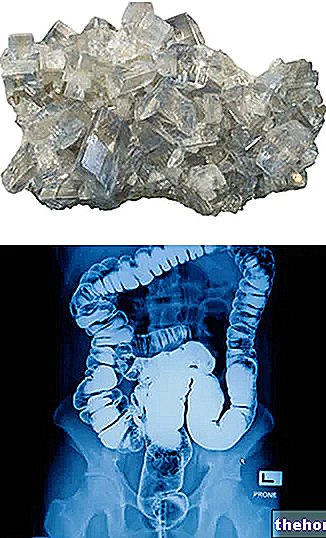
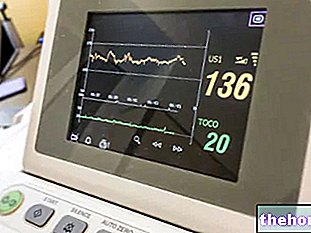
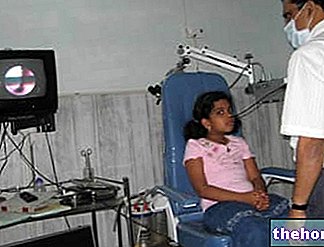
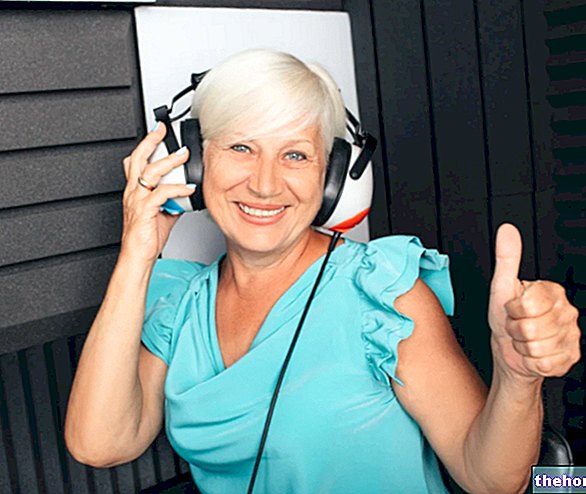
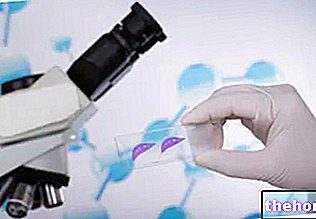
-cos-come-si-svolge.jpg)





















